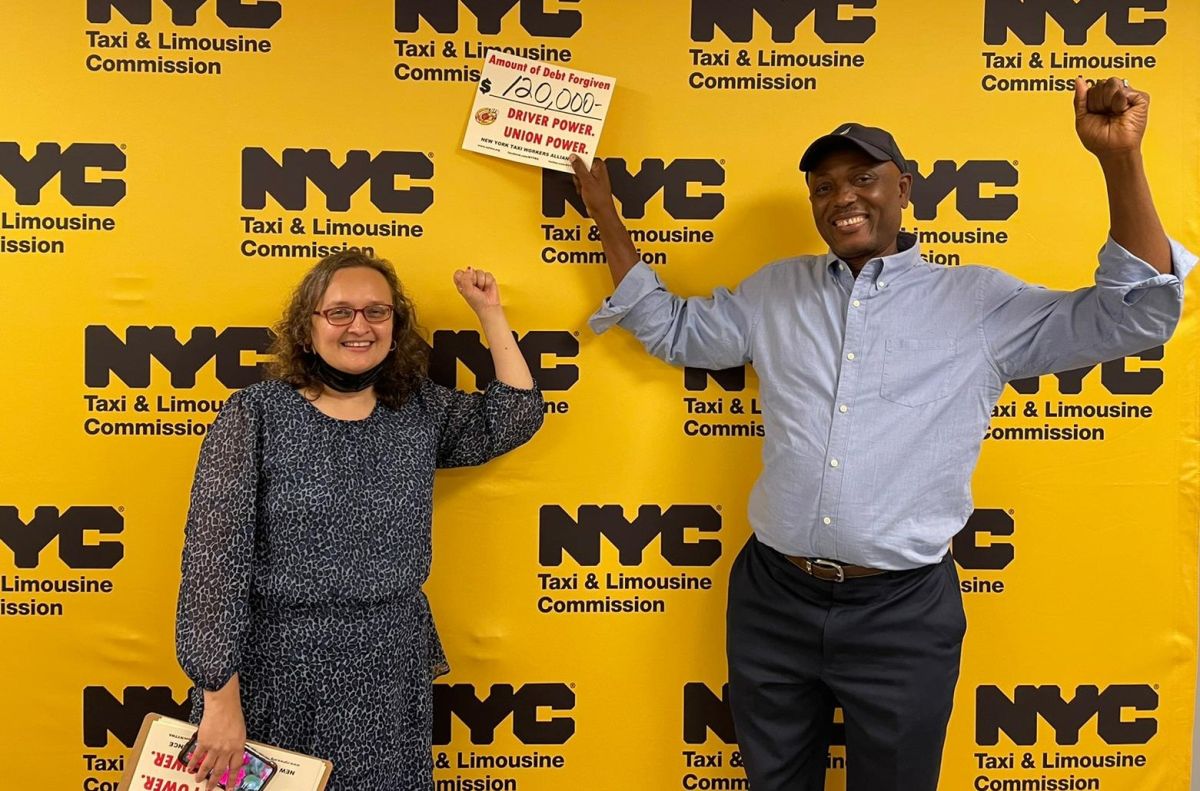The almost “death sentence” industry of yellow taxi drivers, one of the most powerful emblems of New York City, is closing a chapter this week that will allow hundreds of owners of medallions, (as operating permits are known) receive a “lifeline”.
This step comes after years in which crippling interest on loans to acquire these licenses led some to ruin. And, in the worst of extremes, to suicide.
Until this Friday, September 30, these small entrepreneurs have a chance to close the restructuring of medallion loans, with the empresas FieldPoint, Marblegate and Da Palma, the three major lenders fund these permits.
“We want to make sure that all eligible drivers get this debt relief that it will save and change their lives. Our members went on a 15-day hunger strike to put pressure on and make this historic victory possible,” said Bhairavi Desai, director of the New York Taxi Workers Alliance (NYTWA).
Nearly 1,000 drivers have already received a total of $200 million in debt forgiveness.
They will pay much less
The program agreed with the City, through the Taxi and Limousine Commission (TLC), restructures taxi medallion loans so that they are secured in the event of default. Now most have a maximum principal balance of $170,000 and a maximum interest rate of 7.3%.
The current average debt that drowned the owners of the emblematic yellow taxi drivers is $550,000 with average monthly payments of $3,000. Under the final schedule, that loan moment was substantially reduced to $170,000, payable to $1,234 per month.
The final plan reflects an agreed interest increase in November 2021 from 5% to 7.3% as rates have risen due to inflation, but they now have a longer term of 20 years to 25 years to help offset some of that cost.
“This changes the future of this business. It is a testament to the tireless organizing of NYTWA’s 25,000 member drivers through 46 days of 24/7 protests, arrests, and a 15-day hunger strike. When we fight, we win,” said Assembly member Zohran Mamdani.
On the “way” other reliefs
Other proposals are on the way to improve the income of these taxi drivers, the TLC has just presented a new proposal that could be approved in October, which would approve an increase in the cost of traveling in a yellow taxi in the Big Apple, in approximately one 2. 3%. This would mean the first increase in taximeter markers in a decade.
Specifically, the base fare and surcharges for any trip would increase from $3.30 a $4.50. Driver pay would also increase by 29% and flat-rate rides from John F. Kennedy Airport to Manhattan they would cost $52 to $65.
The predictable response from thousands of regular taxi service users is that on-demand ride-hailing apps like Uber and Lyft will continue to be more and more the most economical option for those who need to move outside the spectrum of the Subway.
“Obviously crime forces you to avoid trains when you leave work late. But this inflation affects us all. And a dollar or two saved on a trip is something. And the yellow ones are obviously more expensive,” comments Mildred Mata, a hard-working Mexican of a restaurant in midtown Manhattan.
An oxygen
The devastation of this sector began to be recorded long before the pandemic, an economic tragedy that was reflected in a chain of suicides by operators of these transport services. In just a few months of 2018, six taxi drivers took their lives. Two of them Dominicans.
For taxi drivers like the Dominican, Jesús Marquez, 65 years olds, which sublease a medallion, this agreement managed to give an “oxygen” of survival to an industry that was about to disappear completely, with the additional cost of thousands of families ruined and on the streets.
“New York City is not the same. Where are the thousands of tourists who used to arrive at the airport? Where are the executives who came to town? The competition is now stronger with app taxi drivers. Let’s see if we can recover”, considers the islander, with 20 years in the sector.
Other driving professionals such as Colombian Camilo Achiverri, 53 years old are less optimistic: “With this inflation my brother, every day you have to work more hours to do the same. There is a reality, people prefer new platforms. Go to the airports,” she indicated.
These individual debt reliefs of thousands of dollars were agreed on last November 3 and the compass of debt renegotiations began on September 19.
4 keys to the medallion crisis
- Since 2011, revenue from yellow cabs has dropped by more than 50%.
- At its peak in 2014, yellow cab medallions sold for a million dollars.
- Since the proliferation of Uber, Lyft, and other ride-sharing apps beginning in 2011, the value of the medallion has plummeted to $80,000.
- Taxi drivers had to struggle to pay off hundreds of thousands of dollars in debts racked up by medallions that were rendered virtually worthless overnight.
The data:
- 3,000 license holders to operate the yellow cabs in NYC are qualified under the Assistance Program to receive significant relief from their debts.

